Maybe You and I Should Just Start Building the Cities We Want — Part 1: The Search for Home
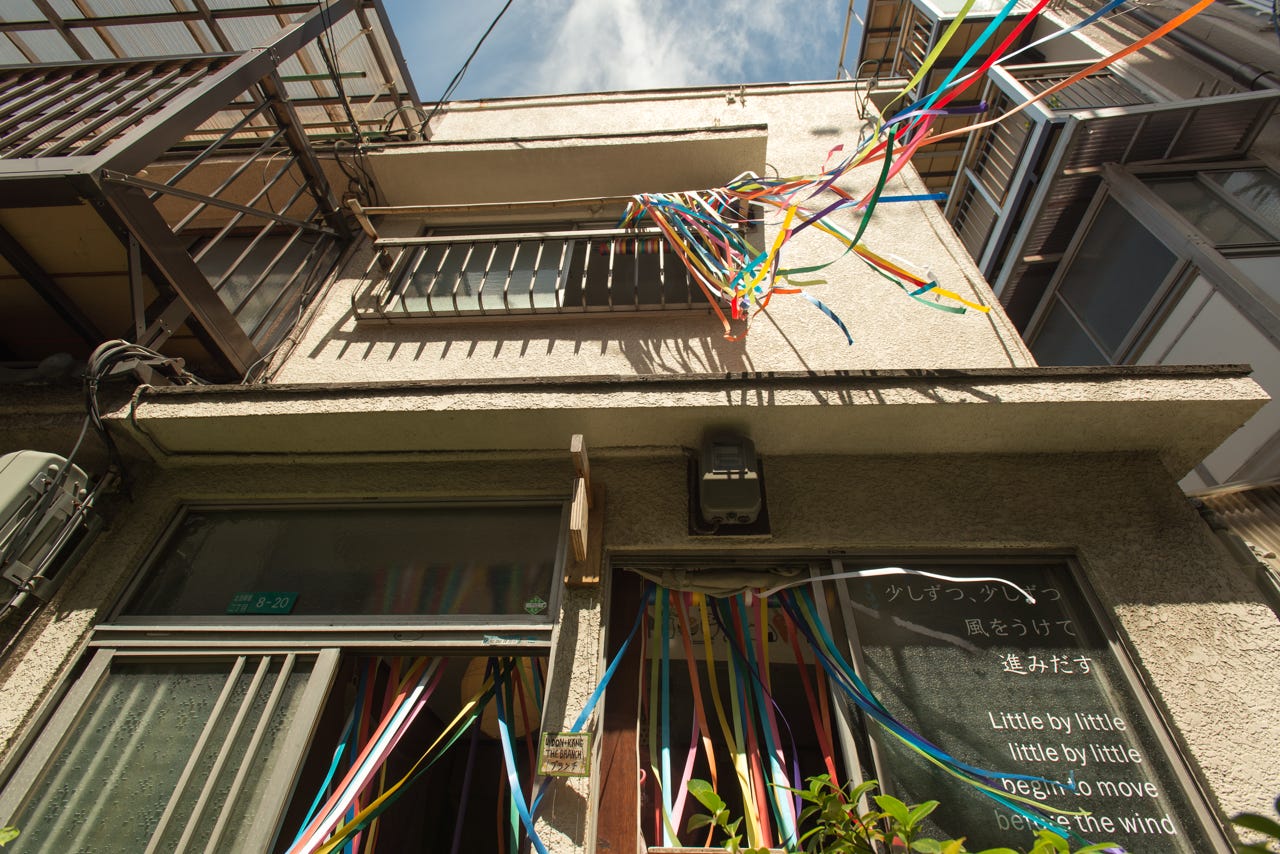
At dawn we rolled our suitcases down the alley, trying to be as quiet as possible. A few of the neighbors came out anyway. They knew Suhee and I were leaving the country. The old woman with the tiny front garden cracked her door open just as we passed. She had donated a set of chairs to us during our first month here — the first real furniture in our home. Peeking through the leaves that surrounded her doorway, she said good morning. I saw tears running down her wrinkled cheeks and wondered at first what could be wrong. Soon I caught what was going on. She was crying about us.
“You leave today then?” she asked.
“Yeah. To Korea. We might be back. Not sure when.”
“Everything is uncertain these days.”
That cute old woman stood outside her door and waved until we were out of sight, down another alley towards the subway station.
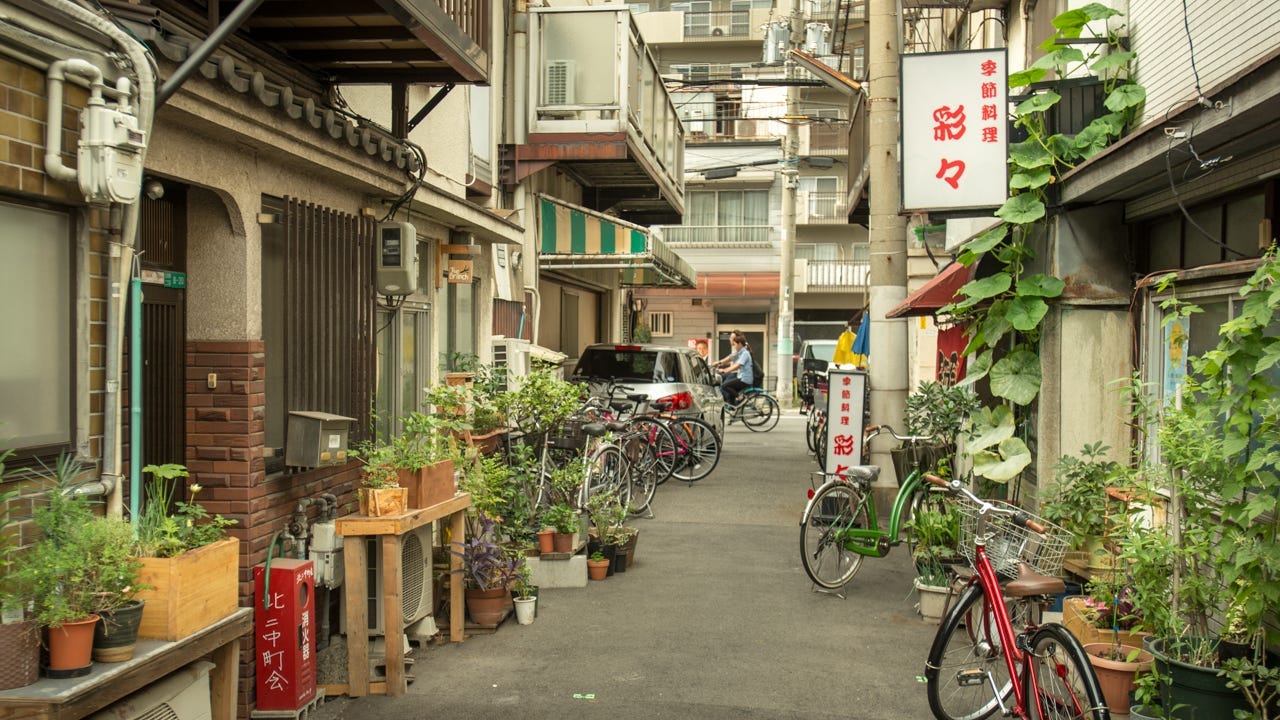
Indeed, during the pandemic, everything was uncertain. Japan’s borders were closed for more than two years. By the time we made it back for a visit using a special artist visa, many of those neighbors were gone.
But our leaving Japan was not really about pandemics or visas.
—
During this past decade, one of our big life goals has been to save up money, buy a small piece of land, and build or remodel a house that would be ours. The ideal remodel would be an old hanook (the traditional style of Korean homes). A vernacular architecture built with natural local materials, Hanook structures are handsome and thoughtfully connected to the landscape. They also have a spartan practicality about them, and an alluring charm that goes beyond the aesthetic. These days however, a hanook in decent condition is really tough to come by.
As it is, in the years since we left Japan, we never found a place that Suhee and I both loved, which also matched our very small budget. Certainly a traditional hanook has always been out of the question, but as silly as it might seem, we have never given up the dream.
Longtime readers here will know that at the beginning of this decade, we lived in Japan for around four years on a cultural visa. I still remember the smells, sights, and feeling of that place — the smell of morning tea roasting at the factory behind our 80-year-old machiya, the fish and cigarette smoke wafting from the Chinese bar across the alley in the evenings, and afterwards, the wailing sounds from the karaoke lounge down the street.
Every night before going to bed, I used to stand at our kitchen window on that alley. Cracking open the window, I would take in these smells and sounds, and say a little prayer of thanks. It was not the most comfortable place to live, but it might be the most beloved and well-remembered.
Our home doubled as an ecological art space called The Branch, which was often a lively international space for exchange. Most of us will know the melancholy of having to leave a place that we love. It is really difficult, not just to let go of a situation that you feel at home with, but also one that you put so much effort into building. In our case, the home rebuilding, the herb garden, the relationships with all of the kind and talented people we befriended.
The last time I visited Osaka, our garden was paved over for a parking lot, and the old townhouse we lived in was up for rent — at double the rate we were paying, and fashionably advertised as a “studio carefully remodeled by an American ecological artist”. Accurate description.
—
Over the years I have realized that this is the reality of life as a renter in general — and especially life as an artist renter. The fate of the artist is often one of routinely creating value that someone else capitalizes on.
In this case, I can not say I have any hard feelings about it. The urban world runs on contracts — some financial, some social, some unspoken. We can choose to abide by them, reject them, or we can try to invent our own, new kinds of contracts, but we need to be aware of what we are getting ourselves into.
In truth, we got a lot of good things out of the terms of the Osaka contract. The experience of living in Japan in a fledgling artist village in a rough yet truly magical old section of the city. The trust of the landowner to experiment and remodel the space as we saw fit, with no oversight, and warehouse full of materials to use. The landowning company was really good to us, and they also ran a local creative foundation, who supported us to produce crazy artist projects and some events in spaces that we could only dream about doing elsewhere.
This neighborhood provided a handful of beautiful years, where we engaged with thousands of people through ecological art, workshops, and in the course of daily life. I am immensely thankful for that time, and I would not trade it for anything.
At the same time, we left Osaka feeling that we wanted to push ourselves to build a place on our terms, in a situation that was not so tenuous.
—
After leaving Japan, Suhee and I spent a year looking for our next home in Korea. We tried to set up life in the countryside, at the foot of Jiri Mountain. It was winter. It was horribly cold. It was windy. The building we lived in was a former medical clinic. It was not suited to be a house, and we found out many of the reasons why during the six months we stayed there.
While we met amazing friends in this countryside setting — and I happily learned how to play the Korean drum called a Janggu, I believe one should feel a deep connection with the place that you live. Somehow we just never fully felt at home here.
The housing situation likely didn’t help. If you ever get the chance to live in an abandoned concrete medical clinic in the middle of nowhere, I wouldn’t recommend it.
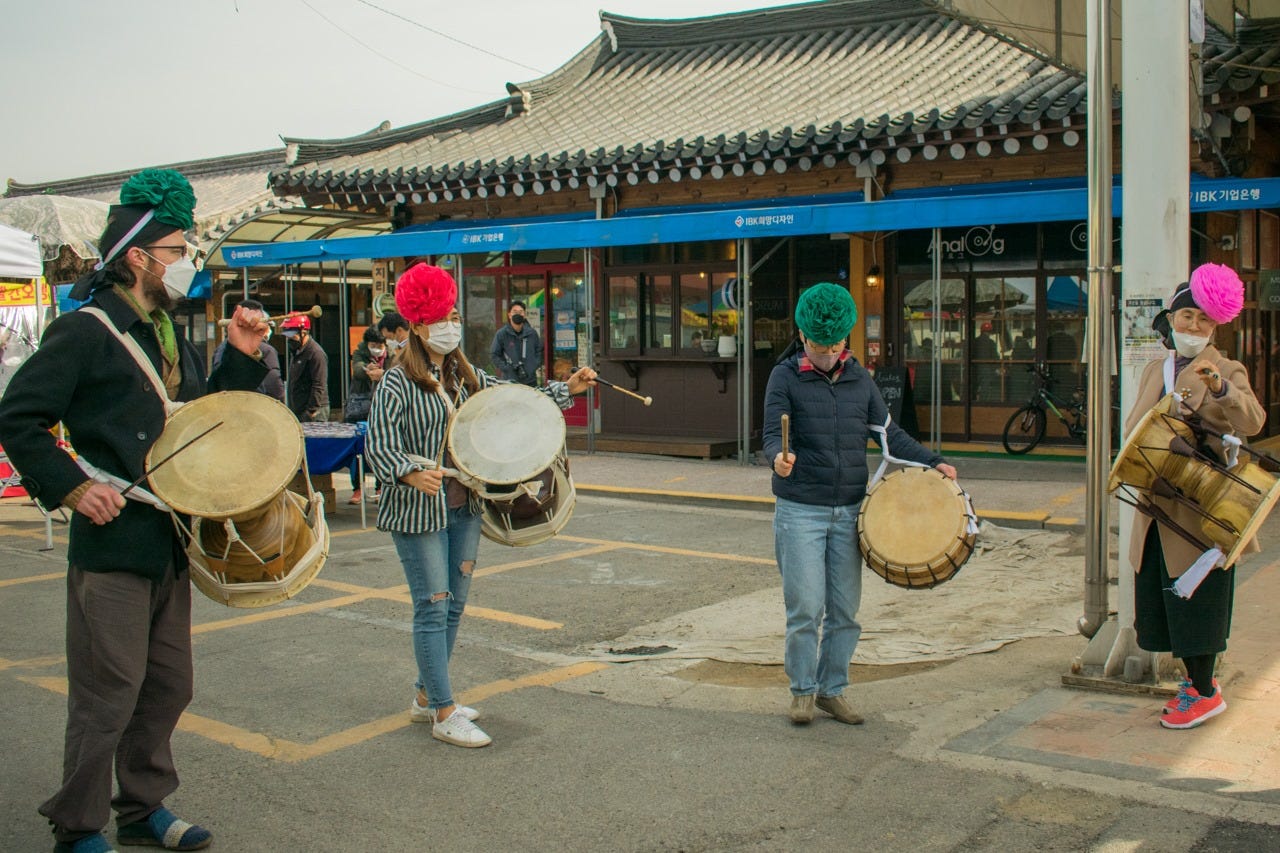
All of this, combined with the deteriorating health of Suhee’s mother at the time, pushed us to move to a city. We eventually ended up in Daejeon, a comfortable, centrally-located city, close to nature, where many of our creative friends lived. Daejeon is also just an hour on the KTX (bullet train) to Seoul, where Suhee could visit her mother more easily.
—
Daejeon turned out to be an appropriate decision. Shortly after we moved, Suhee needed to visit Seoul often. She shortly became the caretaker for her mother. They stayed in the hospital together for some time, and yet within months her condition became rapidly worse.
Suhee’s mother eventually moved to a more intensive care hospital before passing away early in the new year.
As anyone who has been through death in a family can attest, this was a difficult time for everyone, but Suhee told me she also bonded with her mother in ways that were not possible while she was growing up. Some of these ways — changing her mom’s diapers and listening to much bottled up frustration come out while living in a hectic hospital room — were less than idyllic. But other ways — sharing true feelings and entering that deep familial sense of love — were more cathartic.
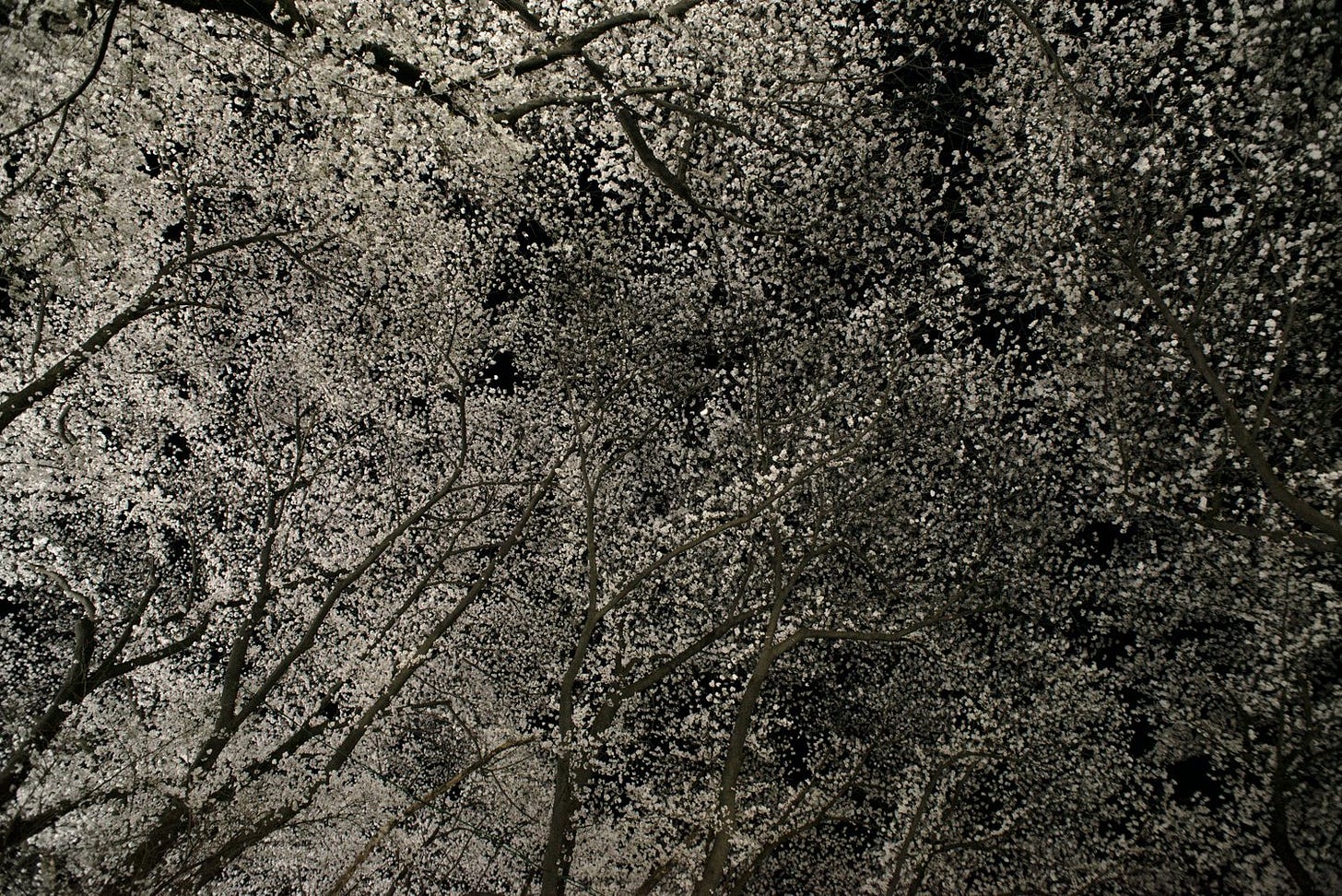
Shortly after her mother’s passing, the plum blossoms were already coming out, sending their healing scent through the cold spring breeze. On their heels were the popcorn-like cherry blossoms on the hill near the house. These too, felt healing, as we returned to ‘normal’ life in Daejeon.
Still renters yet again, we were living on the second floor of a big old house. Just up Daejeon Stream from the downtown area, we had a view of the beloved Bomun Mountain, and a cute little old lady who seemed very sweet was living on the first floor. Her family was said to own the building, and so by those terms, she was our landlord.
For the moment, it seemed that all we were missing was a studio space. Then suddenly, an opportunity opened up just down the river, where a friend offered to co-lease a shop and studio space together.
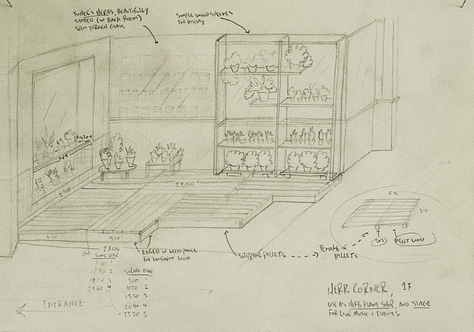
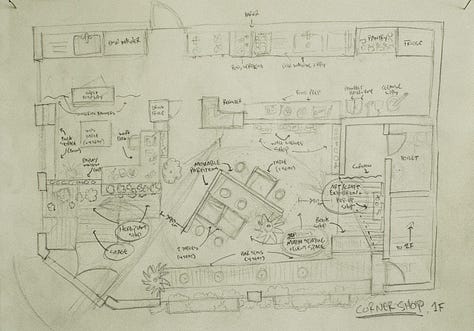
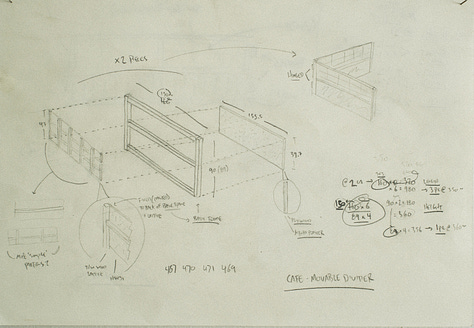
We said yes, spent three months designing and building a new interior, and once more, just over two years after leaving Japan, we had both a studio space, and home. At this place called Corner Shop, I had the freedom to bicycle to my studio, sit at my desk, and spend a generous amount of time writing, making art, and illustrating.
For the first time in a while, things felt like they were stable — and this time, we almost believed it.
—
Next Time: We press forward, all the while not knowing how many tries we have left in us, should our living and working spaces disappear again…
Another Story: If you have been following The Possible City for a while, you’ll be familiar with our life in Osaka. If you want to revisit that place, or if you are new and want to dig deeper into the beauty an old Japanese neighborhood, this might be the one to read:
—
Thanks again to all of you, for letting me into your world, and especially to the people who have been supporting me as I get my bearings in this new year. Your gentle nagging and encouragement is immensely helpful. Really.
Anyone can help this project grow, by taking a moment to think of someone else who might like this work, and then clicking the magic button below.
If you are not signed up yet to get these stories to your inbox, do it below. You can also join our supremely awesome club of paid subscribers.
—
Continue with the other parts of this series:
| Part 1: The Search for Home | Part 2: Every Path is Possible | Part 3: House by House |





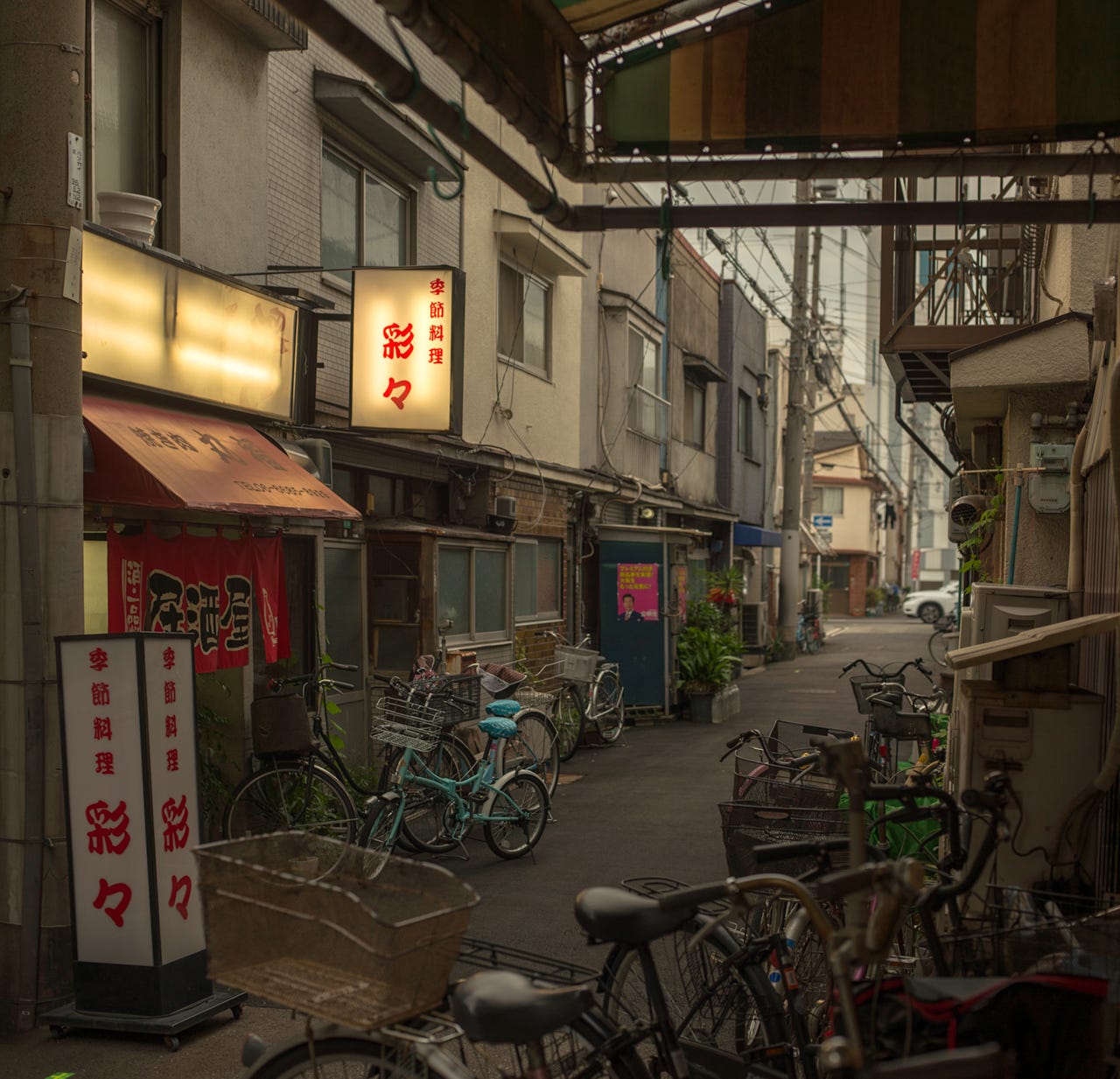

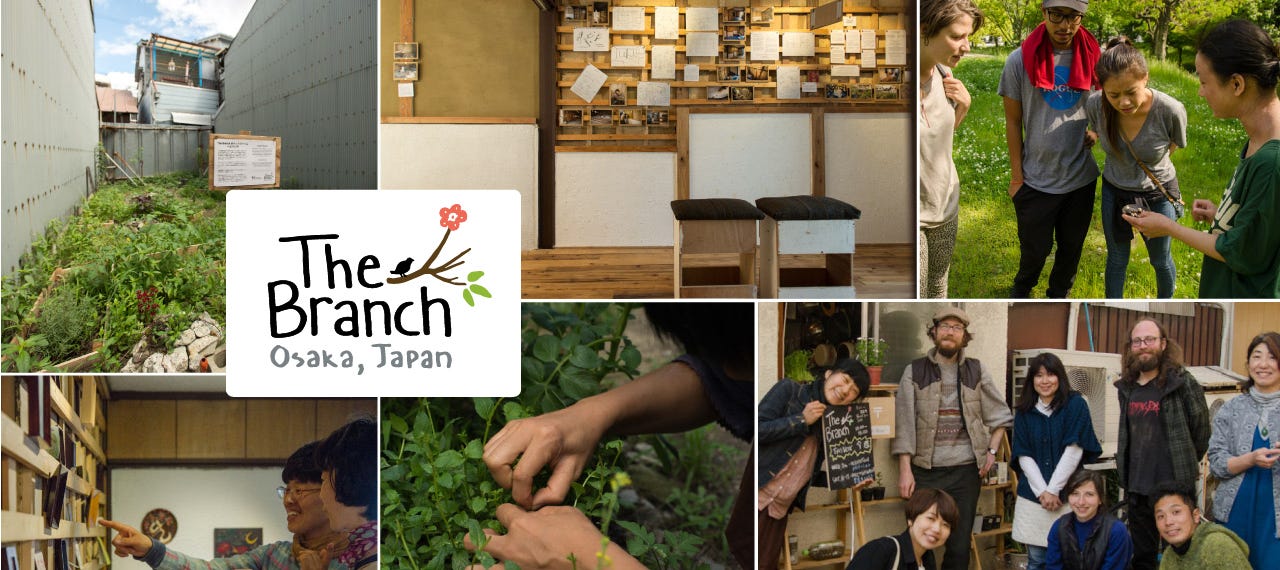

Patrick and Suhee, thank you for sharing this part of your journey with us. I’m sorry for your loss. I hear in this story how loss comes with the gains…of love and connection and inspiration. It’s a fair trade off for sure, but only amplifies the impact when lost. Wishing you both mourning and healing and celebration of the love shared. 🌺💗🦋🌞🌿
Wow this felt very relatable- finding your home/community, living in Osaka, being an artist and caring for sick parents- ive been there. It’s so hard to create something real and meaningful and see how things get destroyed or become insanely expensive (Seattle has def showed me that). It’s really interesting to hear about your story and your life! I hope I can make it to Korea sometime soon.